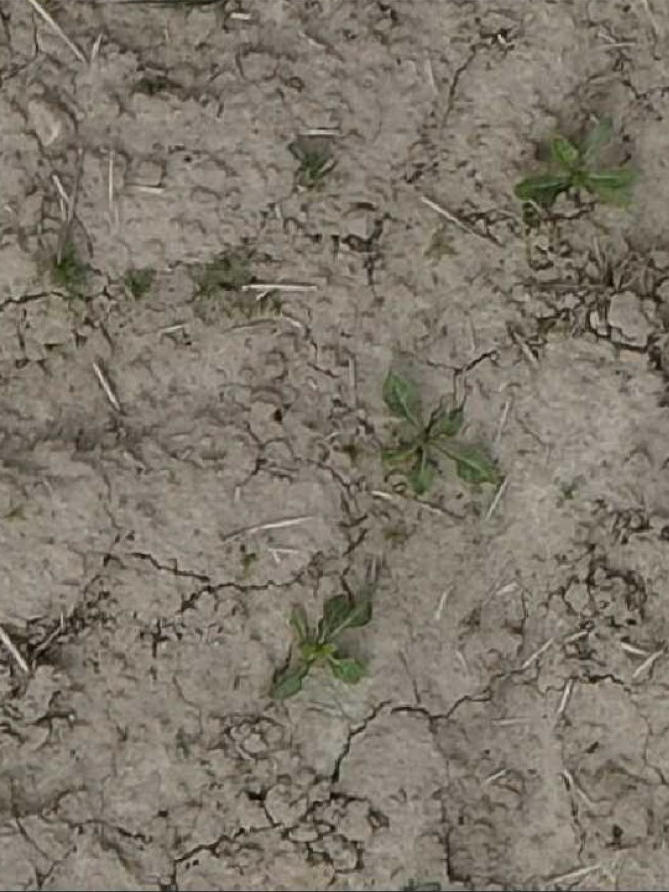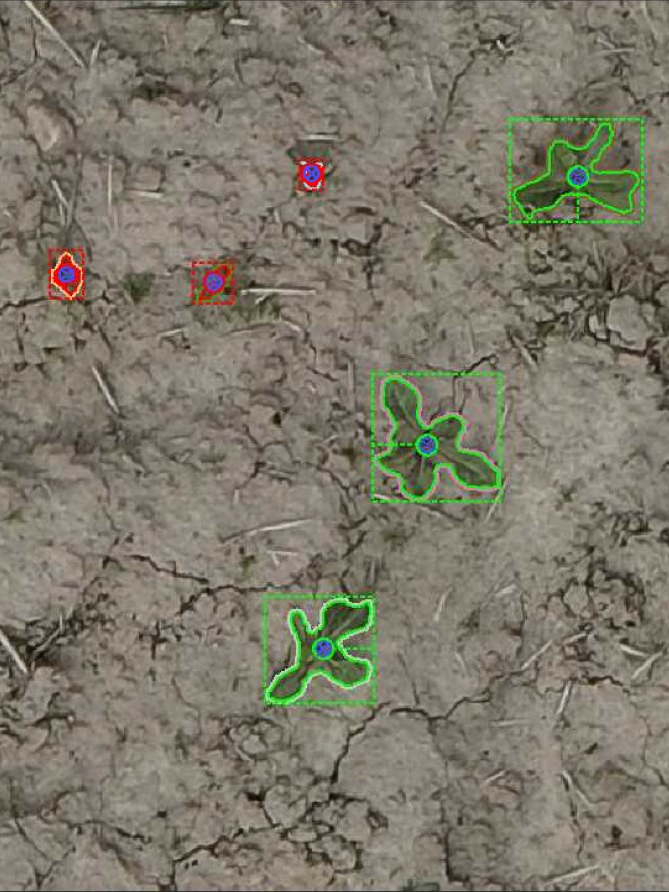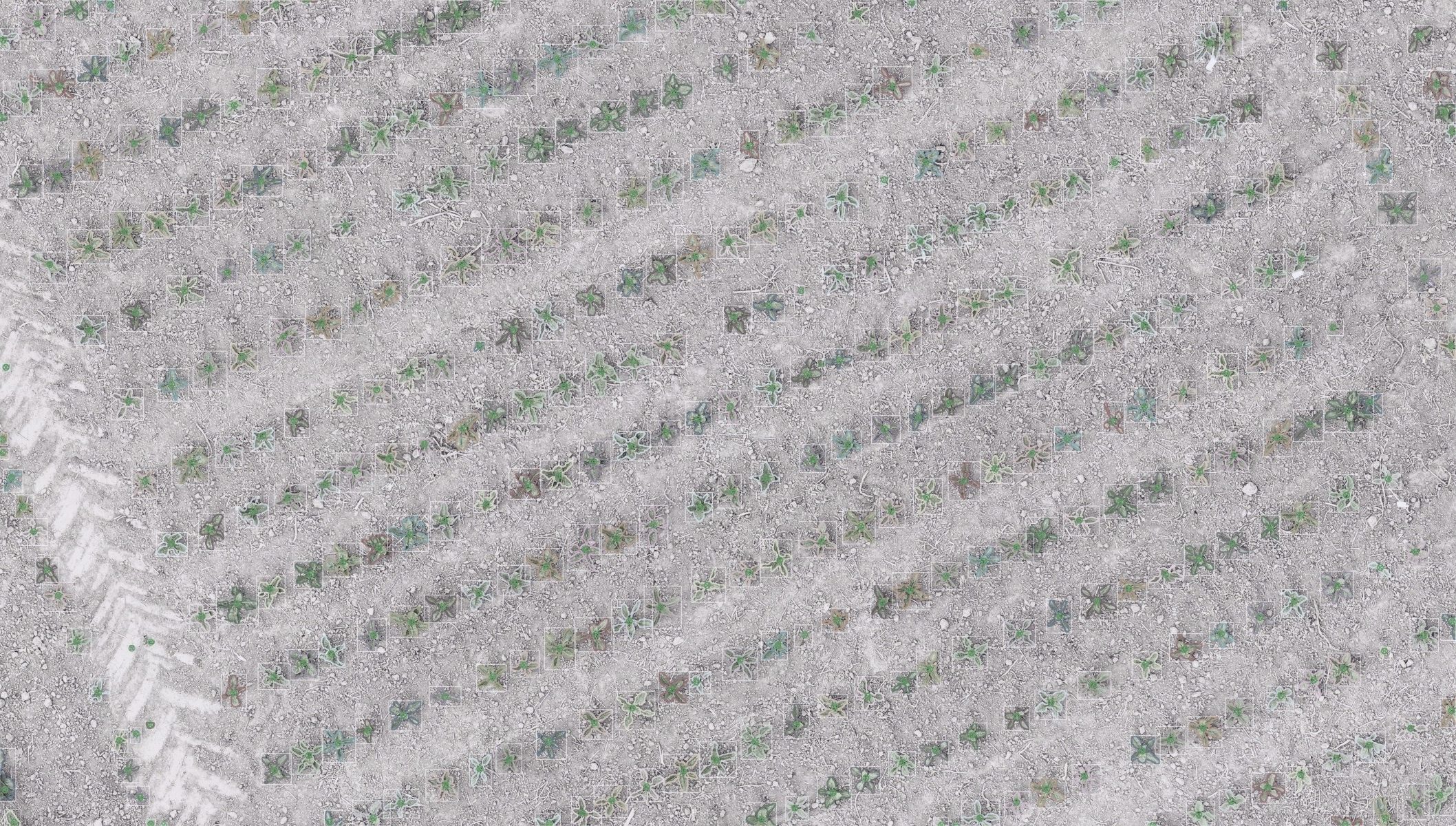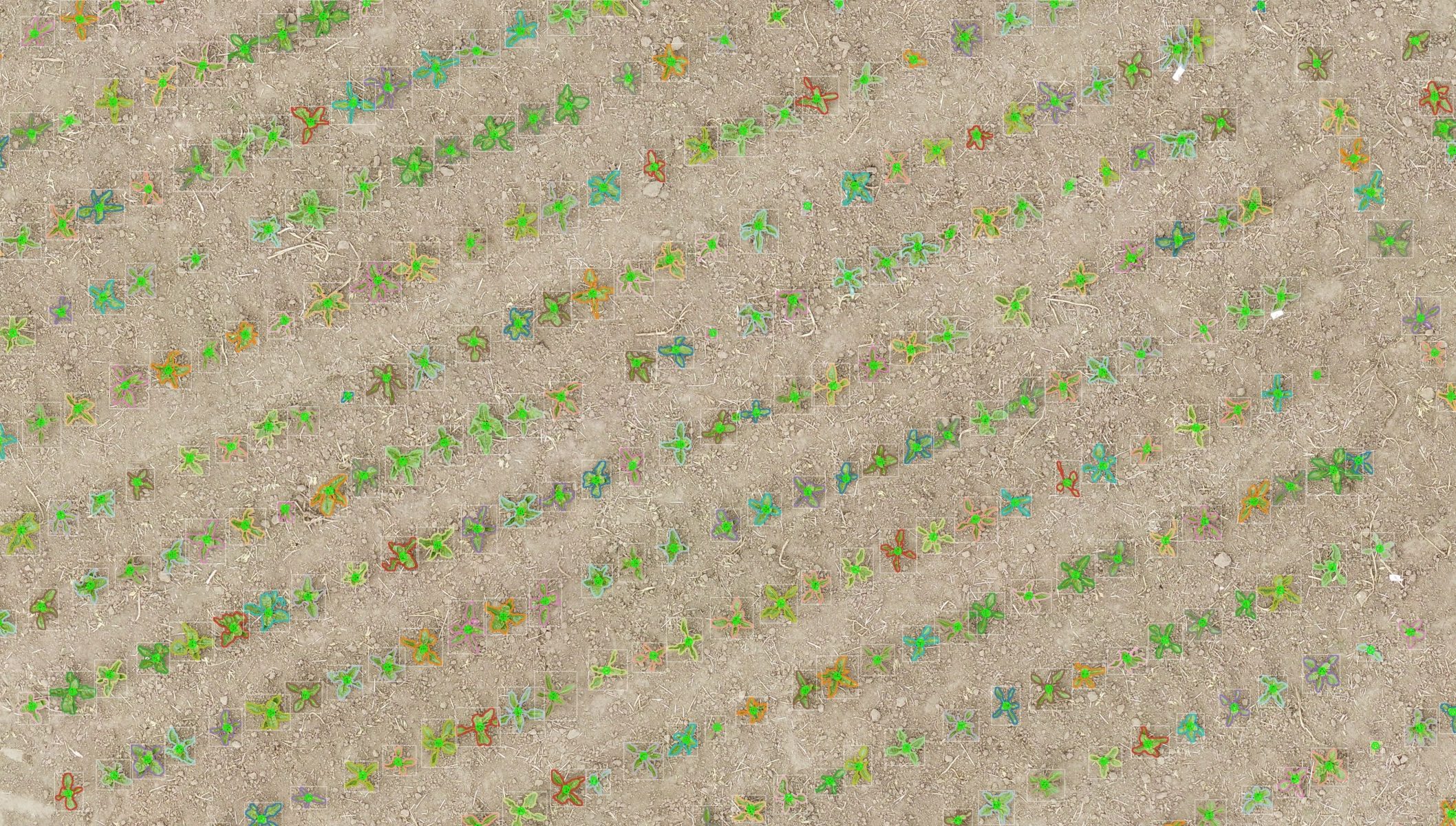Individual Plant Recognition in Sugar Beets
Individual Plant Recognition in Sugar Beets
Individual plant recognition in sugar beets is an important service for plant breeders, as it provides significant insights into the quality of sugar beets, especially in experimental research. Not only the number of plants per plot is considered but also aspects such as size, shape, and color of the sugar beets. With the latest technology such as drones, satellites, and smartphone images, image-based scoring can be created. Pheno-Inspect provides insights using AI-powered algorithms into characteristics such as coverage, row spacing, plant spacing, and inhomogeneous distribution within the plot, accompanying sugar beets from emergence through singling to harvest. Throughout the season, predictions on relevant parameters such as number, size, and leaf coverage per plot are made, directly related to the experimental plan. During the season, diseases and stress factors can also occur, affecting the result due to trial-independent effects. These effects are captured and can be additionally considered in the evaluation of the scoring. Counting sugar beets at every growth stage is a crucial factor in assessing plant development and quality.
In sugar beets, a very early determination of the emergence rate at BBCH 10-12 allows important conclusions about the performance of varieties under local conditions and in plant production. A rapid overview of possible problems during emergence therefore allows for early intervention. Sugar beets are comparatively easy to recognize individually and can be robustly recognized by Pheno-Inspect up to row closure at BBCH 20-30.
The picture above shows the result of an AI image analysis in a maize plot. Individual maize plants (yellow) can be distinguished from weeds. Dicots (violet) and monocots (blue) are recognized independently.
In addition to counting sugar beets, Pheno-Inspect also performs size determination. Capturing the variation in number, size, and spatial distribution of plants provides valuable data for agricultural research and plant production. This information contributes to a better understanding of sugar beet growth and increases the efficiency,
Later in the season, stress and disease symptoms can also be analyzed using our AI. Click here to get more information about stress and disease detection for sugarbeets.

Why each plant?
The Importance of Plant Counting, Size Determination, and Variation Analysis
In modern agriculture and plant breeding, accurate data collection and analysis of plants play a crucial role. Methods such as plant counting, size determination, and analysis of variation within plant populations are indispensable for gaining informed insights into the condition and performance of crops. These techniques provide valuable information that is important not only for improving varieties and cultivation methods but also for optimizing yields and minimizing environmental impacts.
Plant counting allows for the precise determination of the number of plants per unit area. This information is crucial in assessing seed quality, germination rate, and the growth potential of a crop. Additionally, determining the size of plants provides key indicators of their health and development. It helps in identifying growth trends and making necessary adjustments in cultivation.
Analyzing the variation within a plant population is equally important. It reveals the homogeneity and heterogeneity of a crop, which is of great significance in breeding research and selecting robust varieties. Inhomogeneities may indicate varying growth conditions, disease infestation, or other stress factors that need to be addressed.
Integrating these methods into modern agricultural practices and research, supported by advanced technologies such as drones and AI-based algorithms, is revolutionizing plant breeding, agricultural research, and plant production. It enables more precise and efficient decision-making, contributing to sustainable increases in agricultural productivity and environmental conservation.

Pheno-Inspect Provides The Tool – You Do the Research!

Phenotyping
Field Trials & Agricultural Research
In field trials, whether for plant breeding, seed and variety evaluation, plant protection, or fertilization, it is essential to record the phenotypic characteristics of the plants in the field with high precision and reliability. The exact recording of these parameters is the basis for successfully evaluating the trial and the resulting advice. Field trials are typically divided into exact and strip trials. The relevant trial parameters and phenotypic characteristics are recorded using precisely coordinated and timed field and plant sampling. The counting of individual plants, the assessment of weeds, and the professional evaluation of plant diseases are incredibly time-consuming and, therefore, cost-intensive. As a result, even in the “smaller” trial plots in the exact trial, only random samples are often assessed, as there is often no staff available for a comprehensive assessment. This results in an underutilized information potential of the collected parameters. This applies particularly to strip trials, where site and other effects can only be considered to a limited extent. As a result, data collection and evaluation remain below the technical possibilities already available today.
Pheno-Inspect bietet innovative Produkte zur bildbasierten Auswertung der relevanten Parameter. Zuerst werden Bilddaten der Versuche mit einfach zu bedienenden Drohnen oder Smartphones aufgenommen. Danach erfassen die „digitalen Experten“ von Pheno-Inspect, d.h. auf künstlicher Intelligenz basierende Bildverarbeitungsalgorithmen, jede einzelne Pflanze und extrahieren relevante phänotypischen Kenngrößen für das gesamte Prüfglied. Die Bildanalyse ist vollständig georeferenziert. Die Parameter werden direkt unter Berücksichtigung von Parzellen und/oder Teilflächen aus dem Versuchsplan ausgewertet und können bequem über mehrere Standorte und Zeitpunkte statistisch aufbereitet werden. Die Bildverarbeitungstechnologie kann sehr effizient für Versuchszwecke, unabhängig von Kulturart oder Fragestellung und prinzipiell auch für Fragestellungen im gesamten Pflanzenbau verwendet werden.
Digital Plant assessments
Essential as a tool!
Digital assessments play a crucial role in modern agriculture and plant research. They enable precise and efficient assessment of plants and field trials, which are essential for seed and variety development, crop protection, and fertilization strategies. Traditional methods of plant evaluation are often time-consuming and labor-intensive and can only provide limited amounts of data. This is where digitalization offers groundbreaking progress. With technologies such as drones, smartphones and advanced image processing based on artificial intelligence, each plant can be captured and assessed individually. This enables a comprehensive and precise analysis of large field areas and thus significantly improves the quality and informative value of field trials.
The use of digital assessments has several advantages: it increases efficiency by automating data collection, increases the accuracy of the data, and enables a georeferenced and detailed evaluation of test plots. These techniques can be applied to various crops and issues and open up new possibilities in plant research and agriculture. Our web-based solution for the automatic evaluation of exact and strip trials is an example of the power of digital scoring. It offers a user-friendly, integrated platform seamlessly integrated into existing workflows and enables comprehensive analyses across different locations and points in time. With digital scoring, we drive plant research and agriculture innovation to develop more sustainable and efficient cultivation strategies.






